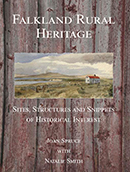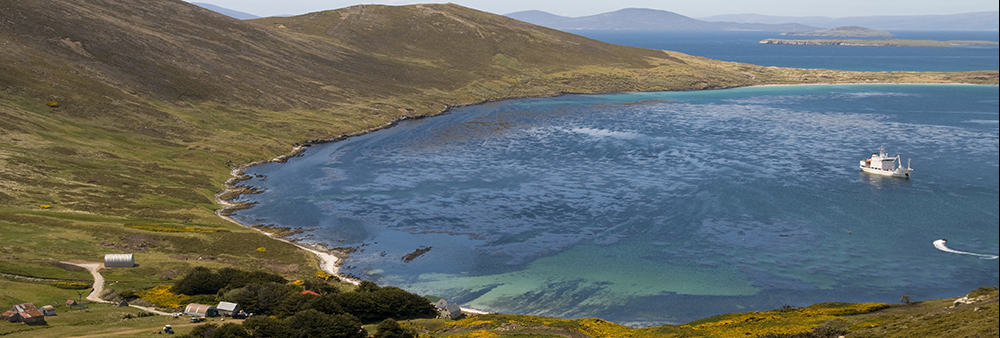CARCASS ISLAND 51, 18’S 60,34’W
Carcass is named for the ship HMS Carcass which surveyed the area in 1766 and is part of the north-west chain of islands including Saunders, Keppel, West Point, and Sedge. Six miles (10 km) long and covering 4680 acres (1894 ha), Carcass has a highest point of 220m (722ft) of Mt Byng. The island is owned by Rob McGill.
Cecil and Kitty Bertrand took over Carcass in 1954 farming sheep and creating habitats for wildlife by erecting more fences to control the sheep movements. Carcass is still a sheep farm carrying 258 sheep and 24 cattle in 2018 but much of its income now comes from tourists who may arrive in large numbers on cruise liner visits or fly in to the tiny airstrip by Islander aircraft.
|
|
Carcass is still a sheep farm carrying 258 sheep and 24 cattle in 2018 but much of its income now comes from tourists who may arrive in large numbers on cruise liner visits or fly in to the tiny airstrip by Islander aircraft. |
|
|
The island has no rats, mice or cats and this combined with tussac cover has made for an abundance of small birds such as Cobb’s wren, Grass wren, Black-throated finch, snipe, siskin etc. Carcass is known for its tame birds making it a good place to see them. Other larger wildlife include Gentoo penguin and Striated caracara and black-crowned night heron. Peale’s porpoise and Commerson’s dolphin are likely to be seen.
Other attractions are the settlement and gardens and three listed buildings, the shed, the store and the boathouse. |
|
|
It is known by the evidence of remains of firepla
ces that the island was used by sealers and penguin hunters. Charles Hansen, a Dane began using Carcass as a base for sealing, and was advised to lease and stock it if he wished to continue use it; a lease for Carcass was granted to him in 1872, this lease also included the Jasons and some other smaller islands. Hansen stocked Carcass with cattle and sheep and started a settlement, Port Pattison. Large areas of tussac were planted and fenced for winter grazing and gorse hedges for shelter and gardens were planted around the settlement. |
Can you add/ correct any information or supply photographs or information , past or present/ life/ people/ buildings? Contact: falklands.southatlantic@gmail.com
Sources include: Falkland Rural Heritage- Joan Spruce with Natalie Smith, nationalarchives.gov.fk/Jane Cameron National Archives/ Land/ buildings
Photographic credits: Jeremy Richards/Shutterstock.com, Gillian Santink/Shutterstock.com. |
    
|
|
|
| |
|
|
 |
Find out more about Carcass Island |
|

 Carcass -Rich Lindie/Shutterstock.com
Carcass -Rich Lindie/Shutterstock.com